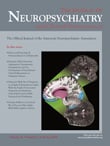Insulinoma in Differential Diagnosis of Seizure Disorder
SIR: Hypoglycemia can mimic epileptic seizures, and insulinoma is one of the rarest causes of it. The authors report on a patient with hypoglycemic spells caused by insulinoma misdiagnosed as intractable epilepsy. The medical history of the case highlights the importance of careful management in the seizures of adulthood, especially in those that are atypical and refractory to pharmacotherapy.
Case Report
A 42-year-old man was referred to our clinic for evaluation of recurrent seizures which had begun to occur 10 months before and were usually seen in the early morning or during tiring work. He had been diagnosed with epilepsy and anxiety disorder by a neurologist, and phenytoin and alprozolam treatment had been prescribed. The frequency of attacks had increased up to four times a week in the previous 3 months. He was referred to our clinic after these complaints. Also, he had no response to carbamazepine and levetiracetam treatment, and the electroencephalogram (EEG) performed shortly after an episode showed diffuse rhythmic theta activity.
The typical attack was seen on the first morning of hospitalization after a fast of 10 hours. It began with fatigue and psychomotor slowing. Some bizarre behaviors, like crying, “I will die” and moving his extremities aimlessly were observed, followed by loss of consciousness. The peripheral glucose level was 30 mg/dl. Upon administration of intravenous glucose solution, he became alert and all symptoms subsided after a few minutes. The blood sample sent for investigations prior to therapy also revealed the low plasma glucose (21 mg/dl) and high circulating insulin level (15 μU/ml). The attacks did not recur with continuous intravenous glucose administration.
An abdominal MRI revealed a 17 mm round nodular mass located over the pancreatic tail. Surgical removal of the tumor resulted in complete resolution of the symptoms and reversion of the insulin and glucose levels back to normal levels. The microscopic evaluation of removed material also confirmed the diagnosis of insulinoma.
Comment
Insulinomas are rare neoplasms recognized by an inappropriately high circulating insulin level, for the ambient blood glucose concentration. The most common neurological feature at presentation is confusion. As the disorder evolves, coma, motor deficits, or convulsions begin to occur. 1 Unless there is the presence of localized abnormalities in the cerebral circulation, low glucose level affects all cerebral neurons, resulting in a generalized dysfunction which may present as diffuse slow activity in EEG and lead the clinician to prescribe antiepileptics, as in our case. The episodic nature of hypoglycemia in insulinoma also causes the symptoms to fluctuate, and delays the diagnosis.
Confusion or bizarre behavior which could be misdiagnosed as an epileptic disorder are much more common (approximately 25%), although nearly six percent of the hypoglycemic cases present with seizures. 2 Hypoglycemia itself can also induce unawareness of the autonomic and neuroglycopenic symptoms and decrease the counterregulatory hormonal responses in insulinoma. 3 So, the unawareness of autonomic symptoms might play a critical role in misinterpretation, as in our case.
Once diagnosed as a refractory epileptic disorder, a significant proportion of patients receive aggressive and escalating pharmacotherapy. Remembering that the metabolic causes of seizures are almost always curable, and may be fatal if untreated, this report highlights the need for careful assessment of every seizure. The critical importance of assessment of blood glucose level in patients with altered level of consciousness is again impressed. Insulinoma, though uncommon, is a potentially recognizable and treatable disease, as long as there is a high index of suspicion. It should always be considered among the diagnostic possibilities in any patient with unusual or inexplicable neurological features, including atypical seizures refractory to pharmacotherapy.
1. Daggett P, Nabarro J: Neurological aspects of insulinomas. Postgrad Med J 1984; 60(707):577–581Google Scholar
2. Malouf R, Brust JC: Hypoglycemia: causes, neurological manifestations, and outcome. Ann Neurol 1985; 17(5):421–430Google Scholar
3. Mitrakou A, Fanelli C, Veneman T, et al: Reversibility of unawareness of hypoglycemia in patients with insulinomas. N Engl J Med 1993;329(12):834–839Google Scholar



